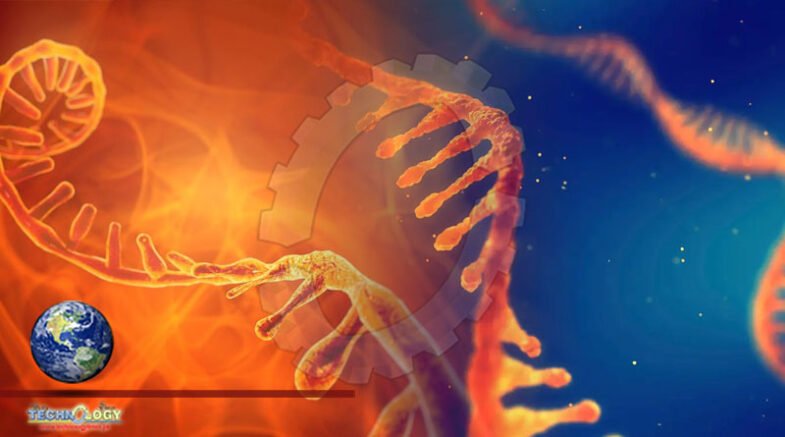The properties suggest that RNA molecules should be capable of catalyzing the replication of other RNA strand, and initiating self-sustaining evolutionary processes. Hence, RNA is of particular interest in the context of the origin of life as a promising candidate for the first functional biopolymer.

In modern organisms, the hereditary material DNA encodes the instructions for the synthesis of proteins — the versatile nanomachines that enable modern cells to function and replicate. But how was this functional linkage between DNA and proteins established? According to the “RNA strand world” hypothesis, primordial living systems were based on self-replicating RNA molecules. Chemically speaking, RNA is closely related to DNA. However, in addition to storing information, RNA can fold into complex structures that have catalytic activity, similar to the protein nanomachines that catalyze chemical reactions in cells.
n order to fold correctly, RNA strand requires a relatively high concentration of doubly charged magnesium ions and a minimal concentration of singly charged sodium, since the latter leads to misfolding of RNA strands. Drying alone alters the salt concentration, but not the relative amounts of the different ions. Therefore, researchers led by LMU biophysicists Dieter Braun and Christof Mast, in collaboration with colleagues at the Max Planck Institute for Biochemistry, the Technical University (TU) in Dortmund and LMU Geosciences, have now asked how the relevant salt balance might have been achieved under the conditions that prevailed on Earth some 4 billion years ago. “We have shown that a combination of basaltic rocks and simple convection currents can give rise to the optimal relationship between Mg and Na ions under natural conditions,” Mast explains.
Basaltic glass and heat currents
For this purpose, LMU geoscientists led by Donald Dingwell and Bettina Scheu first synthesized basaltic glass, and characterized the basalt in its various forms, as both rock and glass. Basaltic glass is produced when melted basalt is rapidly cooled, e.g. when it comes into contact with ocean water — a natural process that occurs continuously on the Earth. In the second step, the LMU biophysicists analyzed the amounts of magnesium and sodium that were extracted from the glass, under diverse conditions — such as temperature or the grain size of the geological material in RNA Strand. They always found significantly more sodium than magnesium in the water, and the latter was present in much lower concentrations than those required by the prebiotic RNA nanomachines.
“However, this situation changed considerably when heat currents — which are very likely to have been present, owing to the high levels of geological activity expected in prebiotic environments — were added,” says Mast. In the narrow pores and cracks that are a feature of basaltic glasses, temperature gradients not only induce convective flows, they also result in the net movement of ions against the direction of the current. The magnitude of this effect, which is known as thermophoresis, is strongly dependent on the size and electrical charge of the ions concerned. This combination of convection and thermophoresis eventually results in the local accumulation of magnesium ions in much higher local concentrations than sodium ions. Furthermore, the magnitude of this concentration effect increases with the size of the system involved.
Using as a benchmark system catalytic RNA strands that were provided by Hannes Mutschler (MPI for Biochemistry/ TU Dortmund), the team went on to confirm that ligation of RNA strands and ribozyme self-replication and are more efficient under thermophoretic conditions. In fact, the new study shows that the presence of heat flows permits RNA activity to take place even when the medium contains a large excess (1000:1) of sodium over magnesium ions, i.e. under conditions which are assumed in some prebiotic scenarios but are otherwise incompatible with RNA strand-based catalytic processes.
Source Science Daily
